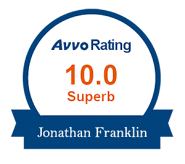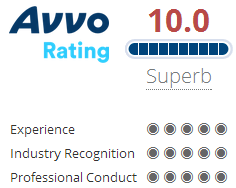Every state has implemented its own driving under the influence, or DUI, laws. California is no exception. The state has devoted VC 23152 to driving under influence of drugs or alcohol. Understanding the law can be confusing. So it is important to know as much as you can about the law to be better prepared to handle any situation where you may be stopped for DUI.
According to the code, the state has six violations that are related to driving under the influence of drugs and/ or alcohol. They are the following:
It is illegal for an individual to drive a vehicle when under the influence of drugs and/ or alcohol.
What does it mean for a driver to operate a vehicle while “under the influence” of drugs and/ or alcohol? Well, in general it means that a person’s driving abilities are not normal because they are changed, or impaired, by alcohol consumption. To prove whether a driver is under the influence, a prosecutor may try to use the field sobriety test results from the DUI stop. Also, he or she may use the officer’s observations regarding the driver’s behavior before, during and after the DUI stop.
It is illegal for an individual who has a blood alcohol concentration, or BAC, or 0.08 percent or higher to drive a vehicle. The BAC is determined by weight of alcohol in his or her blood.
Police will generally administer tests to determine whether a driver is under the influence of drugs and/ or alcohol. These tests include a breath test or blood test. The tests are conducted after a driver is arrested on suspicion of DUI. Both the blood and breath tests determine a driver’s BAC level. According to the law, it is unlawful to drive with a 0.08 percent higher BAC. If a blood or breath test does show a BAC at an illegal level, a driver will typically be charged with DUI.
It is illegal for anyone who is addicted to any drug to operate a motor vehicle.
This is an interesting and complex part DUI charge. What this law means is that a driver addicted to drugs can be charged with DUI if he or she drives a vehicle. The one exception to this rule is for anyone participating in a California-approved narcotic treatment program. He or she can operate a vehicle.
It is illegal for anyone to who operates a commercial motor vehicle to have a BAC of 0.04 percent or higher.
This is found in section code 15210 of the California Vehicle Code. The state defines commercial motor vehicle as a bus, big rig and semi-truck.
It is illegal for anyone who under the influence of a drug to operate a motor vehicle.
Driving under the influence of drugs is taken as seriously as driving under the influence of alcohol in the state. The law does not define which drugs are prohibited. So it includes over-the-counter, illegal street drugs and prescription drugs. Blood tests, not breath tests are generally given to drivers to determine the drug level in their systems.
It is illegal for anyone to consume drugs and alcoholic beverages then operate a vehicle.
Police can arrest anyone driving who is under the influence of drugs and alcohol. Being under the influence of both can result in DUI charges.
In California, a person can be convicted of DUI by violating one or more the laws listed. This is contrary to the myth people believe: drivers can only be charged with DUI if they have a high BAC. Contact the Law Offices of Jonathan Franklin for help with any DUI charge.














